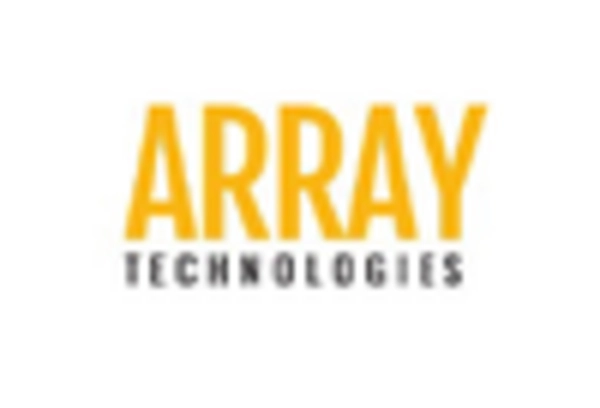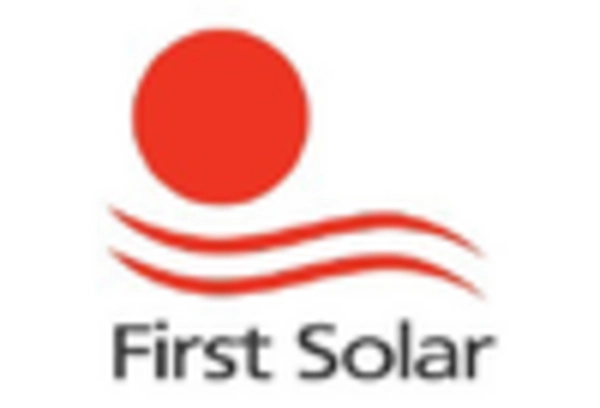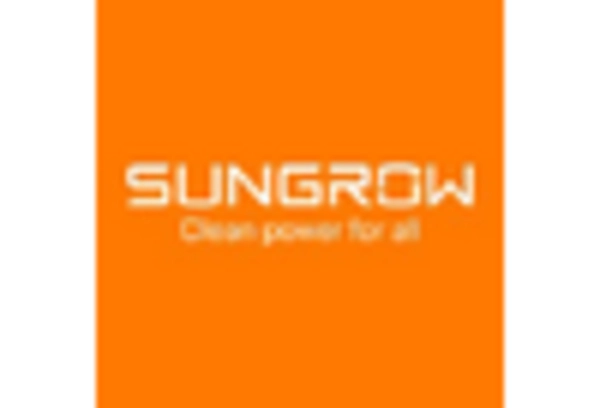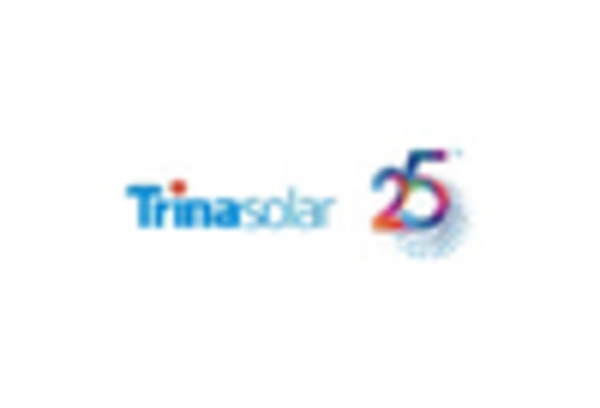Cost Reductions in Solar Technology
Cost reductions in solar technology are significantly influencing the Solar PV Tracker Market. Over the past decade, the cost of solar panels and associated technologies has decreased dramatically, making solar energy more competitive with traditional energy sources. The levelized cost of electricity (LCOE) for solar has fallen by approximately 80% since 2010, which has led to increased investments in solar projects. As the cost of solar trackers also declines, their adoption becomes more feasible for a wider range of applications. This trend is likely to stimulate growth in the Solar PV Tracker Market, as more developers seek to capitalize on the economic advantages of solar energy.
Rising Awareness of Environmental Issues
The growing awareness of environmental issues is driving interest in the Solar PV Tracker Market. As climate change and environmental degradation become more pressing concerns, individuals and organizations are increasingly seeking sustainable energy solutions. Public awareness campaigns and educational initiatives are highlighting the benefits of solar energy, including its role in reducing greenhouse gas emissions. This heightened awareness is translating into increased demand for solar installations, particularly those equipped with tracking systems that maximize energy production. The Solar PV Tracker Market stands to gain from this trend, as consumers and businesses alike prioritize environmentally friendly energy options.
Supportive Government Policies and Incentives
Government policies and incentives play a crucial role in shaping the Solar PV Tracker Market. Many countries are implementing favorable regulations and financial incentives to promote renewable energy adoption. For instance, tax credits, grants, and feed-in tariffs are being offered to encourage investments in solar technologies. According to recent data, countries with robust policy frameworks have seen a 15 to 25% increase in solar installations. These supportive measures not only lower the initial investment barrier but also enhance the return on investment for solar projects. As governments continue to prioritize sustainability, the Solar PV Tracker Market is expected to benefit significantly from these initiatives.
Technological Innovations in Solar PV Trackers
The Solar PV Tracker Market is experiencing a surge in technological innovations that enhance the efficiency and performance of solar energy systems. Advanced tracking systems, such as single-axis and dual-axis trackers, are being developed to optimize solar panel orientation throughout the day. These innovations can increase energy output by 20 to 30% compared to fixed installations. Furthermore, the integration of smart technologies, including IoT and AI, allows for real-time monitoring and predictive maintenance, thereby reducing operational costs. As these technologies become more accessible, they are likely to drive adoption rates in the Solar PV Tracker Market, making solar energy a more viable option for both residential and commercial applications.
Increasing Energy Demand and Sustainability Goals
The rising demand for energy, coupled with sustainability goals, is propelling the Solar PV Tracker Market forward. As populations grow and economies develop, the need for clean and reliable energy sources becomes more pressing. Many nations are setting ambitious targets to reduce carbon emissions and transition to renewable energy. For example, several countries aim to achieve net-zero emissions by 2050, which necessitates a substantial increase in solar energy capacity. The Solar PV Tracker Market is poised to meet this demand, as trackers enhance the efficiency of solar installations, making them a preferred choice for large-scale solar farms. This trend indicates a robust growth trajectory for the industry.














Leave a Comment